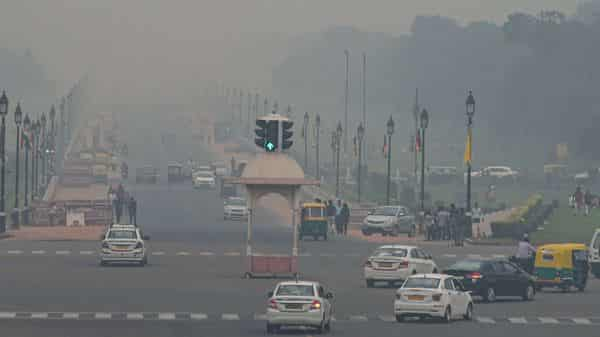Stern Government, Local and Business action required in Delhi for checks on air pollution level
According to the System of Air Quality and Weather Forecasting and Research, the overall Air Quality Index (AQI) in the national capital fell to 301 on Saturday morning, putting it in the ‘very poor’ category (SAFAR). At 9:17 a.m., PM 10 measured 217 in the ‘moderate’ category and PM 2.5 measured 121 in the ‘very poor’ category. For the past several days, Delhi’s air quality has been classified as “poor.”
In 2019, PM2.5 concentrations in Delhi were three times higher than the annual average. The significant determinants towards the dominating wintertime PM2.5 concentration levels in Delhi in 2019 were transportation (23 per cent), industries including power plants (23 per cent), and biomass burning (14 per cent).
Actions taken by the Government bodies
Despite gas infrastructure and supply availability, the Commission for Air Quality Management in the National Capital Region and Adjacent Areas (CAQM) ordered the immediate closure of industries not running on PNG or cleaner fuels in industrial areas on Tuesday.
The Commission had instructed States to start preparing a workable Action plan that included transparent timeframes or the conversion of all identified industrial units to PNG, where gas infrastructure and supply are already in place.
Government, Business and the citizens need to come together, here’s why:
New research introduces trajectories to decrease PM2.5 concentrations and approaches distinct hypothetical outcomes, with Delhi region gasping for air once more.
The study, titled ‘Cost-effectiveness of interventions for control of air pollution in Delhi’ and funded by Bloomberg Philanthropies, evaluates the cost efficiency of intervention programs and the cutbacks in PM2.5 concentrations that they can achieve.
The study recommends more stringent controls on emissions in the NCR, if winter season PM2.5 levels are to be reduced and the rest of the airshed (a geographical area within which air is confined).
Particularly in comparison to the Business as usual scenario, airshed level controls can reduce winter season PM2.5 concentrations by 35% by 2030.
“Given the gravity and extensiveness of the air pollution crisis, we need cannot depend on one solution, rather we need a ‘multi-level’ solution and collaboration across government, business, civil society, and citizens,” says Priya Shankar, who leads Bloomberg Philanthropies’ India climate and ecosystem programmes. With stronger and sustained mitigation efforts, progress in improving Delhi’s air quality is possible, according to this analysis.
The study calculates the potential for different intervention strategies in segments like transportation, biomass, and industry to reduce emissions and PM2.5 concentrations. It also evaluates the health and financial co-benefits of using an airshed approach for addressing the problem while calculating the probable indirect and dirct benefits which shall be a supplemental financial advantage of 430 billion dollars if regional PM2.5 regulate measures are developed between 2022-2030.
In regions which are landlocked, implimentation of vehicle electrification, environmental standards- shift to public transporation, increase usual of thermal plants, fleet management etc., are expected to meet the annual average standard.
Supplemental regulations, such as limiting ammonia relaunch in farms, enforcing a complete ban on refuse combustion, and turning coal-fired power stations to cleaner fuels, are required to meet national ambient air quality standards during the winter.
One other major problem that remains unaddressed is ‘Stubble burning.’
In the midst of all of this, there is a major regulatory issue that is frequently overlooked.
The main regulatory issue with winter pollutants emitted by stubble burning in surrounding states of the NCR region is the stakeholders’ unwillingness to change their behaviour.
Farm owners continue to practise this even though they are aware of the negative environmental and health consequences of their actions.
Despite the fact that their traditional approach has proven ineffective in dealing with the problem, state and law enforcement agencies continue to use it. Aside from these two significant stakeholders, another concerning trend is the repetition of society’s behaviour and perception of the problem.
The very first step is to effectively articulate the regulatory difficulties. One of the most important characteristics of a well-defined regulatory issue is quantifiable and manageable. This means that by regulating the behaviour that caused the crisis in the first place, the extent whereby the issue is fixed can be measured.
The next, maybe most important, step is thoroughly investigating the regulatory issue at hand. This entails using a holistic approach to map all of the potential causes of the problem at hand.
A next move in the regulation methodology is to generate an extensive list of remedies that really can assist in addressing the extensive list of causes identified in previous stages.
Shortcuts must be avoided, and tough decisions must be made to achieve credible success in dealing with the challenge of winter pollution caused by stubble burning.












